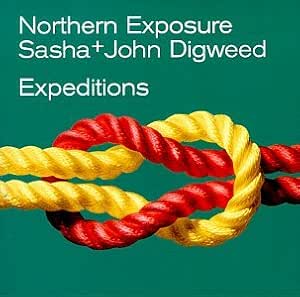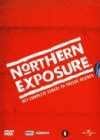“Northern Exposure,” a beloved television series that aired from 1990 to 1995, is renowned for its unique blend of humor, drama, and profound cultural references. Set in the fictional town of Cicely, Alaska, the show explores the lives of its quirky residents and their interactions with Dr. Joel Fleischman, a New York City physician. Season 4, in particular, stands out for its rich tapestry of cultural references and themes that resonate with viewers on multiple levels. This article delves into these cultural dimensions, examining how they reflect broader societal issues and contribute to the show’s enduring appeal.
Thematic Exploration of Community and Belonging

One of the central themes in Season 4 of “Northern Exposure” is the exploration of community and belonging. The series often juxtaposes the bustling urban life of New York with the close-knit community of Cicely, prompting viewers to reflect on what it means to be part of a community.
- Interpersonal Relationships: The characters in Cicely often form deep and complex relationships that highlight the importance of connection. For instance, the friendship between Joel and Chris (the local DJ) showcases how bonds can transcend cultural and personal differences.
- Isolation vs. Connection: Characters like Ed and Ruth-Anne embody the struggle between isolation and the desire for connection, emphasizing that even in a small town, individuals can feel lonely.
- Shared Experiences: The town’s annual events, such as the “Cicely Winter Carnival,” serve as a backdrop for the characters to come together, reinforcing the idea that shared experiences can strengthen community ties.
Intersecting Cultures: Indigenous Influence
![Northern Exposure The Complete Series [Bluray] Movies & TV](https://images-na.ssl-images-amazon.com/images/I/81Wz0wWcBcL._AC_UL160_SR160,160_.jpg)
Season 4 also prominently features references to Indigenous cultures, which play a crucial role in shaping the series’ narrative. The incorporation of Native Alaskan traditions and beliefs highlights the cultural richness of the region.
- Native Alaskan Characters: The presence of characters such as Marilyn and her connection to her heritage introduces viewers to Indigenous perspectives, providing a counterpoint to Joel’s urban worldview.
- Folklore and Mythology: Episodes often reference local myths and legends, such as the significance of the Northern Lights, which serve as a metaphor for enlightenment and spiritual awakening.
- Respect for Nature: The series emphasizes the Indigenous respect for nature, often depicted through characters’ interactions with their environment, highlighting themes of sustainability and coexistence.
Humor as a Reflection of Cultural Identity

The use of humor in “Northern Exposure” serves as a lens through which cultural identity is examined. Season 4 skillfully employs comedy to address serious themes, making them more accessible to the audience.
- Absurdity of Life: The quirky characters and absurd situations often mirror the unpredictability of life, encouraging viewers to find humor in their own struggles.
- Satire of Urban Life: The comedic contrast between Joel’s sophisticated, city-born sensibilities and the rustic, offbeat culture of Cicely provides a satirical commentary on urban versus rural lifestyles.
- Character Archetypes: Each character embodies different cultural archetypes, from the intellectual to the eccentric, allowing the series to explore various aspects of human experience through humor.
Philosophical Undertones: Existential Questions

Another significant aspect of Season 4 is its philosophical undertones, which often provoke existential questions about life, purpose, and identity.
- Search for Meaning: Joel’s journey throughout the season reflects a quest for meaning beyond the confines of his medical career, prompting viewers to consider their own life choices.
- Mortality and Legacy: The series frequently addresses mortality, as seen in episodes that explore the lives of older characters. This focus encourages viewers to reflect on their own legacies and the impact they leave behind.
- Connection to Nature: The characters’ interactions with the Alaskan landscape serve as a reminder of humanity’s connection to the natural world, prompting philosophical musings on existence and the universe.
Intertextual References: Pop Culture and Literature

“Northern Exposure” is rich in intertextual references, drawing from various elements of pop culture and literature, which adds depth to its storytelling.
- Literary Allusions: The show frequently references literary works, such as Shakespeare and Native American poetry, to enrich character dialogues and themes. For example, Chris often quotes poets in his radio segments, blending art with everyday life.
- Film References: The series pays homage to classic films, with episodes that parody well-known cinematic tropes, such as the “fish-out-of-water” narrative, seen through Joel’s experiences in Cicely.
- Television Tropes: The show also plays with television conventions, using meta-commentary to highlight its own narrative devices, engaging viewers in a dialogue about storytelling.
Conclusion: The Cultural Tapestry of Northern Exposure Season 4

Season 4 of “Northern Exposure” masterfully intertwines cultural references and themes that resonate deeply with viewers. Through its exploration of community, Indigenous influences, humor, existential philosophy, and intertextuality, the series creates a rich tapestry that reflects the complexities of human experience. By juxtaposing the urban and rural, the show invites audiences to examine their own lives and the cultural contexts that shape them. The enduring appeal of “Northern Exposure” lies not only in its quirky characters and charming setting but also in its ability to provoke thought and discussion about the very nature of culture and identity.
As we revisit this iconic series, it’s essential to appreciate how Season 4 encapsulates the essence of what makes “Northern Exposure” a timeless exploration of the human condition, encouraging us to find humor, connection, and meaning in our own lives.